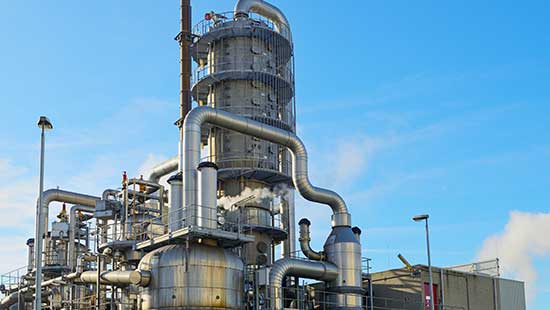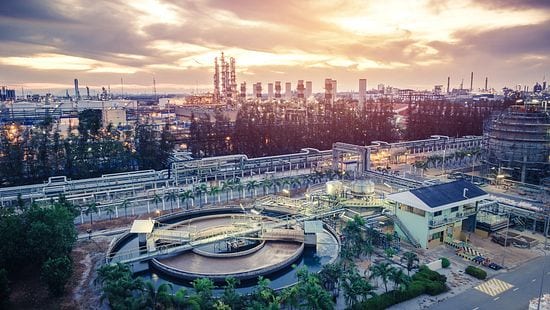Nalco Water has dedicated significant research resources to primary fractionators in recent years. Our goal is to provide monitoring tools that not only tell an ethylene producer how the system is performing now, but predict future performance based on operational parameters.
Fouling in the Top Section of the Tower
Fouling in the top section of the tower is generally attributed to polymerization of reactive species in the stream, primarily styrene, indene and other unsaturated hydrocarbons. Severe fouling problems threaten the desired throughput and run lengths, reduce ethylene yields, potentially downgrade pygas and other products, and increase maintenance cost for the plant. Nalco Water uses a comprehensive mechanical, operational and chemical (MOC) approach to assess the situation. We then implement a treatment programme with a successful track record in mitigating primary fractionator fouling issues. We provide:
- Proven polymer inhibitors and dispersants
- Rigorous programme monitoring and periodic reviews
- Fouling severity predictions
Fouling and Viscosity Control in the Bottom Section of the Tower
High viscosity and fouling as a consequence of polynuclear aromatics (PNA) destabilization is a common issue for many ethylene producers. As plants crack lighter feedstock, the residence time of the quench oil increases, increasing the probability for fouling and viscosity issues. High viscosity and fouling directly impact the tower’s ability to recover energy, resulting in higher total cost of production. They can also lead to premature plant shutdown. To combat the problem, some producers bring in flux oil, diesel or other diluent to reduce quench oil viscosity, which further increases the cost of operation. We provide effective viscosity control technologies that:
- Reduce/eliminate the need for flux oil injection
- Allow customers to increase tower bottoms temperatures to improve heat recovery
- Improve tower run lengths




